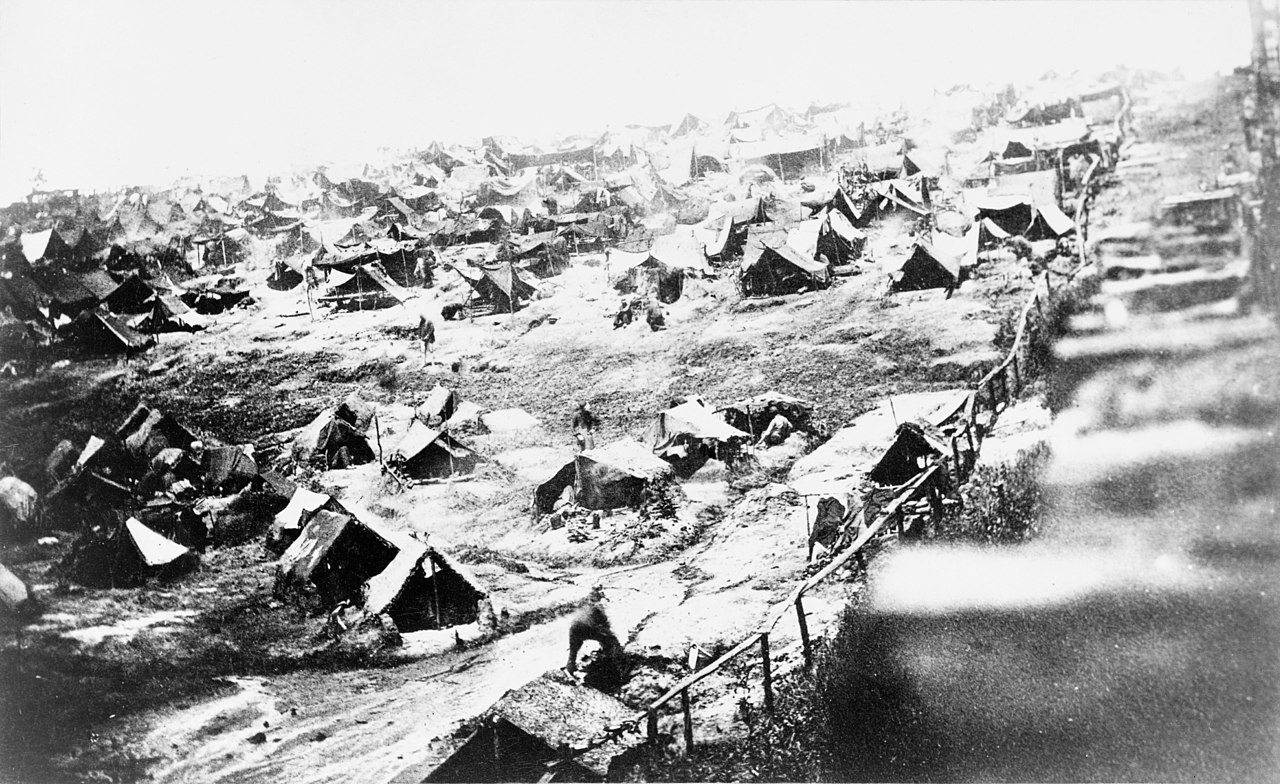When you lie awake at night, what sensations do you feel?
We have, fortunately, little in common with a U.S. soldier imprisoned at Andersonville, Georgia, during the Civil War. But by exploring the detailed personal accounts of those who were there, we can begin to grasp the sensory experience of the place. It becomes possible to understand some small part of what it meant to be there, in a way that no photograph could convey.
In this piece, historian Evan Kutzler explores the nighttime sensory environment of Andersonville prison through a diary entry from 1864.
[Content Warning: The diary entry contains brief, strong language that may not be suitable for all listeners.]
Transcript
Evan Kutzler: John Hoster fell into Confederate hands near Petersburg, Virginia, and they imprisoned him at Andersonville, Georgia in the summer of 1864. On July 4th, Hoster wrote in his diary, “a man was shot in the knee by sentry sixteen last night, between one and 2:00 AM. He was not over the dead-line. When the sentry sang out the number of his post at 2:00 AM, somebody said back to him, “you son of a bitch.” Hoster stopped writing.
Gabriel Hunter-Chang, Host: In February, 1864, the Confederacy opened Andersonville prison in Southwest Georgia. It was designed to hold between six and eight thousand people. But by mid summer, it housed more than thirty thousand prisoners of war. Imagine overcrowded conditions, thirty-six square feet to a person. Ultimately, over thirteen thousand U.S. prisoners died for lack of shelter, clean water, food, and medical treatment.
John Hoster’s matter-of-fact account reflects these nightmarish conditions, especially through what it does not say. But to fully understand the context and meaning of his diary entry, there’s more we need to uncover, hidden between the lines. Historian Evan Kutzler has studied how Civil War prisoners perceived captivity through their senses. Here he is again, describing how the darkness of night altered the prison environment.
Kutzler: Night exaggerated the contradictions and tensions of captivity. Overcrowding and isolation, sleep and restlessness, resistance and domination, dreams and reality. Prisoners sometimes described their first nights in captivity as the moment that being a prisoner felt real.
Darkness temporarily disabled the eyes and increased one’s reliance on moonlight and artificial light as well as the non visual senses, to understand the environment to ward off danger.
Listening, smelling, tasting, feeling, were perhaps most acute in the hours of darkness. The sounds of suffering, of hungry prisoners and sick men trying to stay warm, were everywhere.
Night air smelled more noxious and thus more capable of making prisoners ill. Some are sick, some are afraid of becoming sick. And this contributes to a kind of ghastly scene that prisoners frequently referred to as a form of Hell. And we should be careful, and take the metaphor seriously that prisoners use again and again. They’re thinking back to Dante’s Inferno. They’re thinking back to religious depictions of the underworld. Many of them believe they’re seeing this in Southwest Georgia in the summer of 1864.
Hunter-Chang: For prisoners at Andersonville, night highlighted the suffering brought on by disease, hunger, and cold. But the darkness also made the interactions between people a deadlier game.
Kutzler: Both prisoners and guards shared cultural fears about literal and metaphorical darkness. In other words, they were both afraid of the dark. Night was a frontier, a less disciplined time than during the day. For sentries, night seemed to offer the weak cover to shed some constraints. But it also encouraged the powerful to respond with more brutality.
Prisoners were thus more likely to talk back to guards, but the guards were also more likely to shoot prisoners and to do so with minimal provocation and little or no warning.
Everyone in that 26 acre prison would have heard the gunshot that John Hoster recorded in his diary. For prisoners like Hoster, those gunshots at night underscore the constant deadly struggle between prisoners and guards, as well as the constant criminal, but casual violence. One person talking back to a guard put everyone in the prison at risk. After all, that man shot at 2:00 AM on the 4th of July had probably not been the one cursing the guards.
We cannot account for the full experience of captivity and imprisonment with numbers and dates alone. Even the haunting black and white photographs of Andersonville tell only part of the place’s meaning. Prisoners experienced those days and nights through all five senses. And recovering the full sensory experience is part of understanding the violence, the costs, and the meaning of that war on an individual, on a granular level.
One of the unique aspects of the Civil War era is that so much is written down. We have the perspective of so many different individuals recording their experiences because they thought that what they were living through was important enough to record.
Many people are hungry or suffering from dysentery or shivering through the night in the 19th century, but rarely do those people record their experiences in minute detail. The Civil War is a laboratory for trying out all the other approaches to studying the past that we would like to do in other fields, in other times. But we have the opportunity to do so between 1861 and 1865.
Hunter-Chang: Evan Kutzler is assistant professor of history at Georgia Southwestern State University. His book, “Living by Inches: The Smells, Sounds, Tastes, and Feeling of Captivity in Civil War Prisons” is available from the University of North Carolina Press.
Music
Pelicans – Podington Bear
Floating in Space – Podington Bear
Licensed under Attribution-NonCommercial 3.0 United States (CC BY-NC 3.0 US). Changes to the work have been made.
